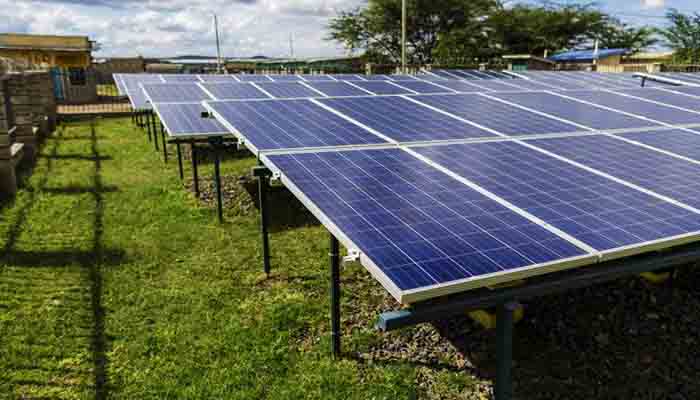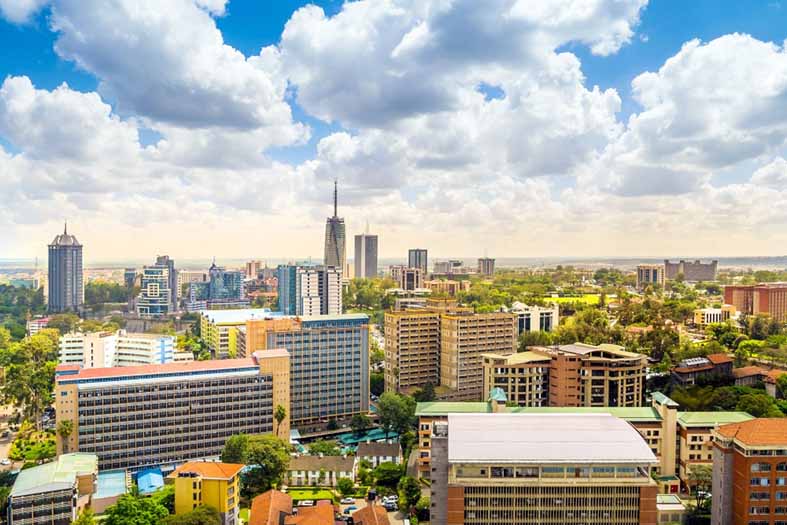Beyond Construction: the Challenges of Deploying Mini-Grids in Kenya

If universal energy access is to be achieved under the Sustainable Development Goals, those looking to renewable energy solutions to address energy access gaps need to ensure the delivery of their services are sustainable, writes Anne Nyambane.
The Sustainable Energy For All (SE4ALL) Charrettes that are taking place this week, seek to address key questions for investors, governments and development partners, who look to accelerate financial flows to countries with the widest energy access gaps. Such engagement is critical if countries across the globe are to achieve universal access to ‘affordable, reliable and modern energy’ by 2030 as aspired to in the seventh Sustainable Development Goal (SDG).
Various donor agencies and development banks already support energy projects across sub-Saharan Africa. UK Minister for Africa, Harriet Baldwin, for example, announced £30 million funding for ‘green’ mini-grids (GMG) and solar technology initiatives in Africa in March 2019. This highlights a general trend towards supporting energy access from renewables around the world but it also demonstrates the potential of mini-grids as an alternative to grid connection in remote rural areas where the challenge of energy access remains greatest. Development partners like DFID and the World Bank have strongly supported private-sector involvement in the energy sector and Kenya is often highlighted as a paragon of this clean energy transformation.
Several countries, including Belgium, Spain, France, Japan, Germany, the United Kingdom and the United States, support energy projects in Kenya through grants and loans. In 2015-16, for example, finance for electricity projects reached approximately $1.9billion – which is up 103 per cent from 2013-14(opens in new window). Another example is the World Bank Group’s $150 million funding for an off-grid solar access project that targets 14 sub-national governments across the country. These counties are characterized by highly dispersed populations and profound basic infrastructure deficits that undermine communities’ economic prosperity where national grid extension is not commercially viable. As such, about 120 World Bank Group-financed mini-grids will be constructed in Kenya and this will initially go some way to addressing the energy access gap that the country currently faces. But what are some of the challenges faced after mini-grid deployment and how can these challenges be addressed?
Discussions with some community members at Talek township in Narok County in February 2019 illustrated some of the challenges that both local and GMG operators face. Talek is a community dependent on electricity from a privately-operated mini-grid in Kenya and its solar-diesel mini-grid is a $280,000 pilot project funded by GIZ – the German development agency. The plant was handed over to the Narok county government in 2016 which then contracted PowerGen, a Nairobi-based private company, to run it. The local community acknowledges that, although the project is well-intended, the delivery of the services after the donor handover has been challenging for three key reasons.
First, the reliability and quality of the electricity being supplied has been poor which can be attributed to two factors: the focus on connecting more consumers to the system and the inability of the system to accommodate the new energy demands that economic growth, associated with energy access, has created. Both factors have led to demand outstripping the supply capacity of the mini-grid and thus affected the reliability and quality of electricity supplied.
Second, consumers have found it hard to get their complaints resolved. Some of the issues that have emerged range from not having an on-site technician in the event of a connection fault to not having a phone number to call if a problem arises. Furthermore, the system relies on people activating power using tokens purchased from an agent, but although successful examples do exist elsewhere in Kenya, the way this is currently structured in Talek is far from efficient.
Third, the price of the electricity generated from the mini-grid is very high when compared to those connected to the central grid. Consumers in Talek have paid $1.04 kilowatt per hour – which is about seven times the price that consumers connected to the central grid pay. Such a price is an economic burden to the consumer as most are from low-income households and is compounded because the unreliable electricity supply has led several businesses to install solar home systems or diesel generators for back up energy generation.
However, from the operator’s perspective, it must be acknowledged that it is impossible to sell electricity at a price close to the national grid – which is heavily subsidized. The recent insolvency of Mobisol, although not strictly operating in the GMG space, has illustrated the wafer-thin profit margins generated by many of the energy access start-ups working in East Africa. This has sent shockwaves through much of the energy access community who have looked at private sector solutions as a ‘silver-bullet’ for transforming the energy access needs of rural communities. To address these challenges, several issues must be tackled by donors, local governments and service providers from the outset – before mini-grids are deployed.
Firstly, mini-grids should be designed for flexibility during the planning phase to accommodate the growing electricity demands envisioned. This should allow both the original developer or a new developer to expand the system if needed. Moreover, the operation and maintenance service provider should prioritize delivery of quality and reliable power over quantity.
Secondly, attention must be paid to the handover phase to ensure that there is adequate capacity and infrastructure at the local government and service provider level to ensure long-term effective and efficient energy service delivery. This requires consideration of the availability of local technicians and customer services infrastructure on the ground. For the regulator, a reporting requirement to keep track of the performance of a utility will ensure that the service providers are held accountable for the service delivered.
Thirdly, the electricity tariff should be affordable as off-grid systems often target marginalized communities whose purchase power is low. The fall in the price of renewable energy technologies by almost three-quarters between 2010 and 2017 will hopefully trickle down to consumers. Beyond the technology, opportunities to lower connection and distribution costs need to be explored. Moreover, a regulatory framework by the local government to help private sector actors provide a more competitive pricing structure and to protect the consumer from extortionate prices should be put in place and enforced.
A forthcoming research paper on the local realities in SDG7 implementation in Kenya seeks to provide detailed insights on the challenges and opportunities to be tapped to ensure sustainability of energy access initiatives. In the meantime, to ensure the success of new and existing mini-grids it is critical that donor agencies and their local partners learn from Talek and other mini-grid projects that are currently underway. It is important to pay more attention to the operational challenges that mini-grid users might face after they are commissioned – which need to be addressed from the outset. This is crucial to ensuring the sustainability of energy access initiatives in places where energy needs are greatest.


